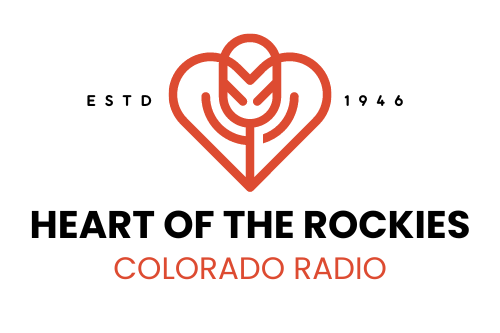If you had asked me at the end of 2020 what 2021 would look like in a pandemic era, I would have said hopeful, promising, and even “normal.”
Unfortunately, my premonition didn’t come true, and the past year has presented itself with a new set of challenges and pivots associated with COVID-19. I recall watching the news one early morning in December 2020, hearing that a COVID-19 vaccine was on its way, overwhelmed with emotion that shortly the pandemic would be behind us. So, here we are at the beginning of 2022. A new year, once again full of hope and promise. And, while we are most likely on the tail end of an unprecedented COVID-19 surge with the introduction of Omicron, now is the time for all of us, including those who work in the public health field, to start moving toward a new and encouraging chapter in how we manage and live with this virus. Here’s why:
The Pfizer and Moderna vaccines are incredibly effective in protecting us from severe illness, hospitalization, and death, especially with a booster shot. Vaccinated people with a booster are 5.3 times less likely to be hospitalized for COVID-19 than vaccinated people without a booster and 17.3 times less likely to be hospitalized for COVID-19 compared to unvaccinated people. Vaccinated people with a booster are 8.1 times less likely to die from COVID-19 than vaccinated people without a booster and 58.8 times less likely to die from COVID-19 compared to unvaccinated people. For those that are concerned about adverse medical reactions after receiving the vaccine, all vaccines pose a miniscule risk of severe reaction. But so do over-the-counter and prescribed medications, surgeries, and other medical procedures. COVID-19 antivirals and monoclonal antibody treatment are not without their risks either. I don’t know where people get their information that states that the risk of a serious reaction or dying from the COVID-19 vaccine is significantly greater than the risk of severe illness or dying from the virus, but I follow science and informed data: https://www.cdc.gov/coronavirus/2019-ncov/vaccines/safety/adverse-events.html. To my knowledge, there have been 2 cases out of thousands vaccinated that have risen to the point of reporting in our county. Sure, we who have gotten vaccinated have had a typical vaccine reaction- fever, fatigue, achiness. For those who have gotten your shingles shot, you know what I mean.
While the Omicron variant has certainly caused quite the surge in cases over the past month locally and beyond, it has proven to be a milder illness for most people, especially for those who are vaccinated and boosted. This is true even for our society’s youngest people who are ineligible for vaccine at this moment in time. In Chaffee County, where January 2022 had the highest recorded infections at 865 known cases (that’s double our worst month of Delta, and probably represents only a fraction of true cases), our local hospital recorded its lowest number of hospitalizations since August 2021.
On the horizon is a vaccine for children 6 months through 5 which will add an extra layer of protection in our county and beyond.
The societal cost of the pandemic on our education, mental health, economy, and so many other sectors has been life altering throughout the world. U.S. opioid deaths have doubled during the pandemic. Violent crime is at an all-time high. Acknowledging that, while we have a mild version of the virus, we must find respite. We don’t know how future variants will present, but for now we have what the public health system was hoping for- a safe and effective vaccine and a mild (for most if fully vaccinated) virus. Eligible people who have chosen not to get vaccinated and boosted have made that personal choice, and we all have to live with that without fear or judgment.
Over the past two years we have all made sacrifices, trying to follow the “rules” that made sense to us or that the public health system required or recommended. Some moved on from the pandemic months ago. But for many others, they have been living on edge, full of anxiety and fear. In fact, a new poll of Americans showed that the most protected people – those who are vaccinated and boosted – are the most scared, while the least protected people – those who are unvaccinated – have very little concern about their COVID-19 risk.
Now is the time to start normalizing what will likely be with us for our entire lives, like influenza and other illnesses that we have learned to live with. I know this transition isn’t easy. It isn’t for me either. But every day most of us get in a car, travel by air, participate in outdoor activities, or just live our lives, knowing that there is a risk of illness or injury. We do it anyway, making a risk/benefit analysis that makes sense to support our physical and mental wellbeing. My call to my community that I love is to follow the basic tenets of communicable disease mitigation for now, like getting vaccinated if you can, staying at home when you are sick, wearing a mask when you are in close proximity to others who might be high risk or when the community is in a high state of transmission, testing if you have COVID-19 symptoms and telling people you have been in close contact with that you have had a positive test result. If you are vaccinated and boosted, but also anxious, please know that it’s ok for you to begin to re-engage in the activities that bring you joy.
Come to find out, emerging from a pandemic into a more endemic phase is more complicated that previous chapters of this global human experience. However, I truly believe that with empathy, kindness, and reason, at this stage in the pandemic we can achieve a sense of normalcy that we have yet to feel in the past two years. Of course, there could come a time when we need to shift gears and go back to a more restrictive way of life. However, that time is not now.
My hope is that all of you find the solace and support you need to live your lives to the fullest even though COVID-19 as household name is here to stay.




